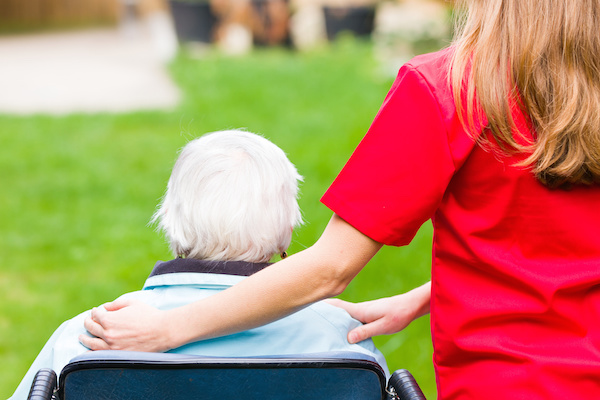
THURSDAY, July 9, 2015 (HealthDay News) — End-of-life care can be fraught with difficult decisions, but a new study finds that since 2000 there has been no increase in the number of Americans with cancer who compose “living wills” to help guide the process.
The study, led by Dr. Amol Narang of the Johns Hopkins School of Medicine in Baltimore, did find a rise in the percentage of cancer patients who had designated power of attorney to another person — from 52 percent of patients surveyed in 2000 to 74 percent in 2012.
However, there were no significant changes in the use of living wills — which help loved ones make decisions about care should the patient become incapacitated — or in the percentage of patients who had frank discussions about end-of-life care.
Still, Narang’s team said that by 2012 many patients had made some effort at “advance care planning,” with about 81 percent having completed at least one form of directive — power of attorney, a living will or end-of-life care discussions.
These efforts can be crucial when the patient becomes unable to decide important issues for themselves, the study authors said.
“Without written or verbal direction, surrogate decision makers may struggle to make care decisions consistent with patient preferences,” they wrote. “As such, policy and health system initiatives that support wider adoption of clinician-patient discussions of end- of-life care preferences are essential.”
The new study is published July 9 in the journal JAMA Oncology.
In the study, Narang’s group looked at data from nearly 2,000 family members — mainly partners, spouses and children — of cancer patients who had died between 2000 and 2012.
During that time, there was little change in hospitalization rates (as opposed to the use of hospice care) at the end of life, with 29 percent spending time in a hospital at the end of life in 2000, versus 27 percent in 2012.
The number of patients who had received “all care possible” rose from 7 percent to 58 percent, the study found. Efforts to limit or withhold treatment near the end of life were associated with living wills and end-of-life discussions, but not with power of attorney, the study authors noted.
They said that any end-of-life discussion “must also include surrogate decision makers,” and these conversations should seek to “educate surrogates on the goals, values and care preferences of their loved ones.”
One expert agreed.
“This shows that naming a person to make decisions for you is not the only answer — one must hold discussions to allow individuals to make decisions as one would want,” said Dr. Maria Carney. She is chief of the division of geriatrics & palliative care of medicine – internal medicine at Long Island Jewish Medical Center in New Hyde Park N.Y. and North Shore University Hospital in Manhasset, N.Y.
“These discussions need to occur, and even guidance on how to have these discussions may be needed,” Carney said.
Dr. Sean Morrison is co-director of the Patty and Jay Baker National Palliative Care Center at the Icahn School of Medicine at Mount Sinai in New York City. He believes that while advance directives can help ensure that patients receive the end-of-life care they desire, they are only “a very small part of the solution.”
Morrison believes that, beyond living wills and other advance care directives, “we need to redesign medical education so that all physicians receive training in having difficult conversations — something that in 2015 still does not occur.”
He also believes that hospice remains out of the reach of some terminally ill patients. “We need to redesign the health care system, such that those patients who decline ineffectual and burdensome treatments near the end of life have universal access to hospice and comfort-directed care that optimizes their quality of life,” Morrison said.
In a related study, also in the same issue of JAMA Oncology, researchers led by Dr. Jennifer Mack of the Dana-Farber Cancer Institute in Boston report that many American teens and young adults dying of cancer were often still receiving intensive care, even as they neared the end of their lives.
“Although adult patients who know they are dying usually do not want to receive aggressive care, which is associated with poorer quality of life near death, we do not know whether adolescents and young adults feel the same way,” Mack’s team wrote.
Her team looked at data on 663 patients, aged 15 to 39, in California who died of cancer between 2001 and 2010. The most common types of diagnoses were gastrointestinal, breast and genitourinary cancers, along with leukemia and lymphoma.
Eleven percent of the patients received chemotherapy within 14 days of death. In the last 30 days of life, 22 percent of patients were admitted to the intensive care, 22 percent had more than one emergency department visit and 62 percent were hospitalized.
Overall, 68 percent of the patients received at least one medically intensive end-of-life care measure.
Are these treatments desired by these young patients or their caregivers? The study authors say that remains unclear.
“High rates of intensive end-of-life measures in this population may not be a failure of communication or palliative care,” they wrote, “but might reflect very different values for end-of-life care in these young people compared with older adults.”
Carney said the study left other questions unanswered.
“What we don’t know is if patients and their families understood the severity of their illness and the prognosis at the time of these interventions,” she noted. “Could open discussions and care focused on palliation of symptoms have impacted care at the end of life to be less intensive care? Were resources such as pain management, home-based palliative services or hospice care offered to support patients and families?
More information
Find out more about living wills at the Harvard Medical School.
Copyright © 2025 HealthDay. All rights reserved.

